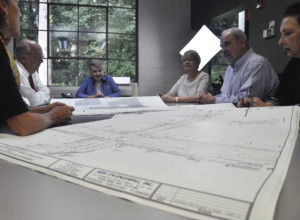Construction Term(s) of the Month: Explanation of Construction Management, Project Management, and Program Management
 Construction projects of any size involve numerous stages and details. Most owners do not have the time or experience to manage the process. It is wise for owners to retain a firm to manage their construction project and there are multiple different services available to owners.
Construction projects of any size involve numerous stages and details. Most owners do not have the time or experience to manage the process. It is wise for owners to retain a firm to manage their construction project and there are multiple different services available to owners.
Construction Management is a professional service that applies effective management techniques to the planning, design, and construction of a project from inception to completion for the purpose of controlling time, cost and quality. Construction projects can be highly complex. Few owners maintain the staff resources necessary to pay close, continuing attention to every detail–yet these details can “make or break” a project. Construction Management is a discipline and management system specifically created to promote the successful execution of capital projects for owners.
Construction Project Management is a professional service similar to Construction Management, but involves handling a construction project from cradle to grave: pre-design, design process, bid/award, construction and close-out. Project Management involves the overall planning, coordination, and control of a project from beginning to completion. The objective is to meet the owners’ requirements in order to produce a functionally and financially viable project.
When Construction Project Management is expanded to include multiple projects, it is called Program Management.
Construction Program Management is the practice of professional construction project management applied to a capital improvement program of one or more projects from inception to completion. Program Management begins with the development of an idea through pre-design activities, selection of the architect, design, acquisition of construction, management of move-in, and post-construction activities for a project or a series of projects. It also provides additional benefits such as standardization, leveraged purchasing and economies of scale.
All of the above serve as an advocate for the owner, acting as extra sets of eyes and ears at every moment and helping to curb issues before they start.
Additional Resources:

0